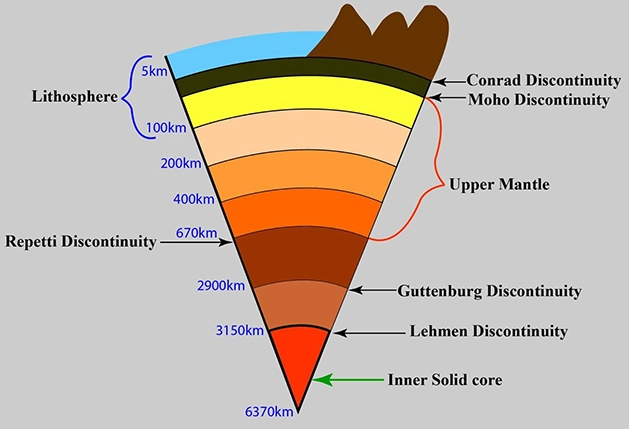Inner Core of the Earth | 27 Jan 2023
Why in News?
Recently, new research suggested that Earth's inner core has stopped spinning faster than its surface and might now be rotating slower than it.
What are the Highlights of the Research?
- Methodology:
- The research analyzed seismic waves from repeating earthquakes over the last six decades.
- By analysing changes in the time and propagation of these signals, they could estimate the rotation of the inner core, which is believed to move independently from the mantle and rest of the planet.
- Findings:
- The inner core started rotating slightly faster than the rest of the planet in the early 1970s. But it had been slowing down before coming in sync with Earth's rotation around 2009.
- There has been a "negative trend", meaning the inner core is now rotating slower than the surface. Next change may occur in the mid-2040s.
- The results seem to indicate that the Earth’s inner core changes its speed of rotation every 60-70 years on average.
- Significance:
- The Study can motivate some researchers to build and test models which treat the whole Earth as an integrated dynamic system.
- The slowdown could change how rapidly the entire planet spins, as well as influence how the core evolves with time.
How is the Earth’s Inner Core?
- About:
- It is the innermost layer of the Earth. It is a hot iron ball of the size of Pluto.
- The inner core is solid due to the pressure caused by the weight put on it by the Earth’s other top layers.
- It is distinct from the outer core, which is a liquid.
- Roughly 5,000 kilometers (3,100 miles) below the surface we live on, the inner core can spin independently because it floats in the liquid metal outer core.
- Radius:
- The inner core has an average radius of 1220 km.
- The boundary between the inner and outer cores is located at approximately 5150 km below the surface of the Earth.
- This boundary is called the Lehman Seismic Discontinuity.
- Temperature:
- Between 7,200–8,500ºF (4,000–4,700ºC).
- Properties:
- It is predicted to have very high thermal and electrical conductivity.
What are the Three Layers of Earth?
- Crust: This is the outside layer of the earth and is made of solid rock, mostly basalt and granite.
- Mantle: It lies below the crust and is up to 2900 km thick. It consists of hot, dense, iron and magnesium-rich solid rock.
- Core: It is the center of the earth and is made up of two parts: the liquid outer core and solid inner core. The outer core is made of nickel, iron and molten rock.
UPSC Civil Services Examination, Previous Year Question (PYQ)
Prelims
Q. In the structure of planet Earth, below the mantle, the core is mainly made up of which one of the following? (2009)
(a) Aluminium
(b) Chromium
(c) Iron
(d) Silicon
Ans: (c)
Mains
Q. Define mantle plume and explain its role in plate tectonics. (2018)

